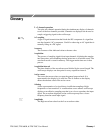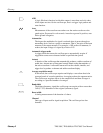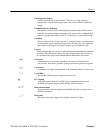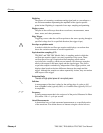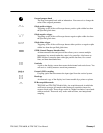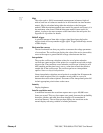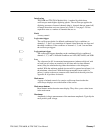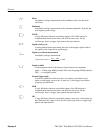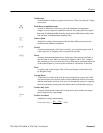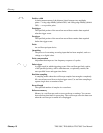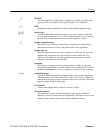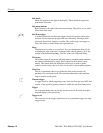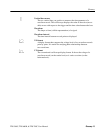
Glossary
TDS 500C, TDS 600B, & TDS 700C User Manual
Glossary–7
Interleaving
TDS 500B and TDS 700A Models Only: A method by which these
oscilloscopes attain higher digitizing speeds. The oscilloscope applies the
digitizing resources of unused channels (that is, channels that are turned off)
to sample those that are in use (turned on). Table 3–2 on page 3–29 lists
acquisition rates vs. number of channels that are on.
Knob
A rotary control.
Logic state trigger
The oscilloscope checks for defined combinatorial logic conditions on
channels 1, 2, and 3 on a transition of channel 4 that meets the set slope and
threshold conditions. If the conditions of channels 1, 2, and 3 are met then
the oscilloscope triggers.
Logic pattern trigger
The oscilloscope triggers depending on the combinatorial logic condition of
channels 1, 2, 3, and 4. Allowable conditions are AND, OR, NAND, and NOR.
Low
The value used as 0% in automated measurements (whenever high ref, mid
ref, and low ref values are needed as in fall time and rise time measure-
ments). May be calculated using either the min/max or the histogram
method. With the min/max method (most useful for general waveforms), it is
the minimum value found. With the histogram method (most useful for
pulses), it refers to the most common value found below the mid point. See
Appendix B: Algorithms for details.
Main menu
A group of related controls for a major oscilloscope function that the
oscilloscope displays across the bottom of the screen.
Main menu buttons
Bezel buttons under the main menu display. They allow you to select items
in the main menu.
Maximum
Amplitude (voltage) measurement of the maximum amplitude. Typically the
most positive peak voltage.





